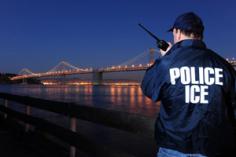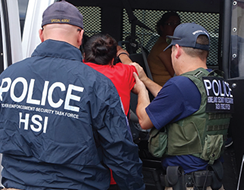"We stop criminals from moving weapons, drugs and victims across our nation’s borders."
Program Overview
The primary mission of the Homeland Security Investigations’ (HSI) Border Enforcement Security Task Force (BEST) is to combat emerging and existing Transnational Criminal Organizations (TCO) by employing the full range of federal, state, local, tribal and international law enforcement authorities and resources in the fight to identify, investigate, disrupt and dismantle these organizations at every level of operation.
The BEST investigative model is a comprehensive response to the growing threat to border security, public safety and national security. BESTs eliminate the barriers between federal and local investigations (access to both federal and state prosecutors) and close the gap with international partners in multinational criminal investigations.
BESTs also create an environment that minimizes the vulnerabilities in our operations that TCOs have traditionally capitalized on to exploit our nation’s land and sea borders.
Background
In 2005, HSI created the first BEST in Laredo, Texas, in partnership with U.S. Customs and Border Protection (CBP) and other federal, state, local and international law enforcement agencies. BEST Laredo represented HSI’s first combined, direct response to growing violence along the border with Mexico, and established the baseline for implementing the program elsewhere.
The success of the BEST investigative model is predicated on all BEST partner special agents and Task Force Officers (TFO) working together in one location, recognizing and leveraging a threat-based risk-mitigating investigative task force model. The model leverages the unique resources and abilities of all participating law enforcement partners, and the availability to designate partner law enforcement officers with Title 19 customs authorities. This has led to the expansion of the BEST investigative model to northern border and commercial seaport locations.
BEST Today
BEST Special Agents and TFOs investigate a wide range of criminal activity with a nexus to our land and sea borders, to include drug trafficking, arms trafficking, human trafficking and smuggling, gangs, money laundering and bulk cash smuggling, child exploitation, maritime smuggling, illicit tunnels and commercial fraud.
BESTs are located along the northern and southwest land borders, major seaports, and international airports from Hawaii to Puerto Rico. These BESTs comprise approximately 1,000 members representing more than 100 federal, state, local, tribal and international law enforcement agencies that have jointly committed to investigate transnational criminal activity and enhancing border security.
Jaime Zapata BEST Act
In December 2012, President Barack Obama signed into law the Jaime Zapata Border Enforcement Security Task Force Act. The law was named in memory of Jaime Zapata, an HSI special agent assigned to a BEST who was killed on duty in Mexico. This law amends the Homeland Security Act of 2002 to formally establish the BEST program and authorizes the Secretary of Homeland Security to direct the assignment of federal personnel to the program, as well as take other actions to aid federal, state, local and tribal law enforcement agencies in participating in such task forces.
BEST Partners
BESTs incorporate personnel from:
- Department of Homeland Security (HSI, Enforcement and Removal Operations; CBP Offices of Field Operations, Border Patrol, and Air and Marine; U.S. Coast Guard and U.S. Secret Service)
- Department of Justice (Drug Enforcement Administration, Bureau of Alcohol Tobacco Firearms and Explosives, Federal Bureau of Investigation and U.S. Attorney’s Offices)
- Department of Defense (Army Criminal Investigations Command, Defense Criminal Investigative Service, Naval Criminal Investigative Service and state National Guard units)
- Department of the Treasury (Internal Revenue Service - Criminal Investigations)
- Other federal partners
- More than 100 state, local and tribal law enforcement agencies
- International law enforcement agencies











